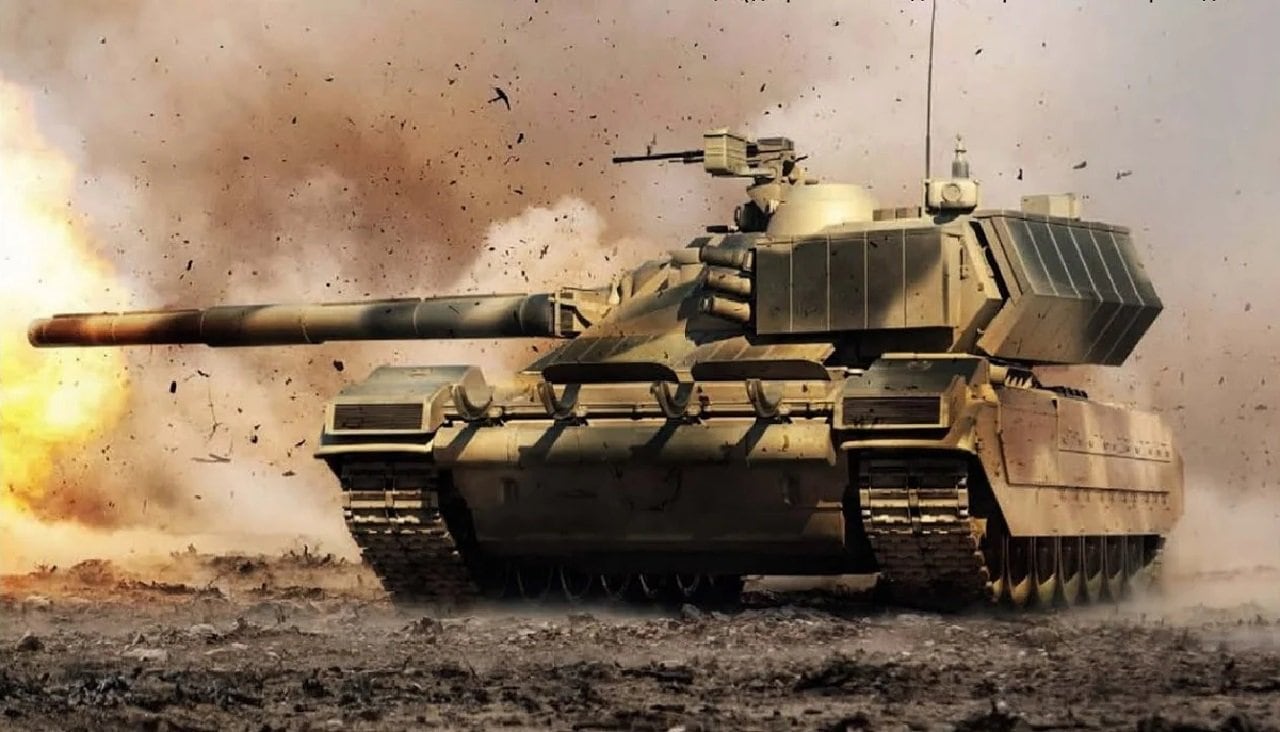Why did the T-95 fail? With a formidable main gun and a variety of other advanced systems, Russia’s Object 195 main battle tank project was intended to be a major leap in capability for Russia’s tank corps. However, the tank, which later became known as the T-95, was never produced outside of prototype models, consigning it to a sizeable category of Russian weapon systems which its R&D system could not support. Below you find a rundown of the tank’s overall theoretical capabilities and an analysis of why Russia passed on the T-95.
T-95: The Mythical Russian Tank
While the T-95’s capabilities were impressive on paper, it should be noted that practically all of what we know about the Object 195 comes from technical information which has trickled out of Russia over the years. One of the T-95s biggest draws was its 152mm smoothbore main gun, which itself was located in an automated turret. This feature, as well as the main gun’s autoloader, would have allowed the tank’s crew to remain within the hull when utilizing the T-95, which would improve the crew’s survivability in theory. Its explosive-reactive armor would have further developed that survivability.
Since it was intended to compete with some of the most recent U.S. and European tanks, the T-95 reportedly included a digital information management system, which would have informed the crew on ammunition and fuel levels, as well as shared and received information on the battlefield with friendly tanks in the area.
The tank would have also reportedly possessed a 1,500-horsepower engine, which would have made it a particularly powerful vehicle compared to other Russian tanks of a similar timeframe.
Given how tall its main gun was in comparison to similar Russian tanks, the T-95’s main gun would have given the tank the capability to fight in both over-the-horizon tank battles and in urban environments with relative ease, given the maneuverability and depression of its main gun.
T-95 Development and Death
Development on the T-95 was first begun in 1988 in order to develop a tank that could outclass the American M1 Abrams tank.
Following the collapse of the Soviet Union, the T-95 was forced to compete with other nascent advanced Russian tank models, such as the T-80UM2 “Black Eagle,” for scarce research and procurement funds.
Prototype trials first began in 1998 and continued through 2000, at which point the development of the tank was officially acknowledged. Moscow halted additional trials for the tank in 2008, and it was subsequently canceled as a project in 2010.
Russian leaders justified their decision to cancel the T-95’s development on the grounds that the tank had become outdated by the end of its long development.
T-95 Tank Becomes the T-14 Armata?
However, despite the fact that T-95 was canceled more than a decade ago, its technological legacy is still present in the Russian military and tank industry today.
In fact, many of the novel technologies built and developed for the T-95 were recycled and used in Russia’s new T-14 Armata tank. In particular, the Armata’s remote-controlled main gun has been recycled for use in Russia’s T-14.

T-14 Armata. Image Credit: Creative Commons.

Russian Armata T-14 Tank. Image Credit: Creative Commons.

Main battle tank T-14 object 148 on heavy unified tracked platform Armata.
Other T-95 technologies were applied to the T-14 to improve survivability, which, however, were much more novel when the T-95 was still under development. However, like the T-95, the Armata has run into many of the same problems and most characteristic issues of the Russian defense industry, which is a lack of money for prolonged R&D and serial production of significantly advanced models.

Image by Vitaly V. Kuzmin from 2016. Creative Commons license.
The T-95’s eventual demise as a project was likely driven by the very same technical specifications which made it look like a strong contender on paper to be Russia’s most modern tank. The necessary development time and financial support to develop such a tank would ultimately prove to be more than the Russian defense industry and military were willing or able to spend on the project, and as a result, it was canceled in favor of other modern tank models like the T-14 and T-90.
19FortyFive’s New Russian Military Analyst, Wesley Culp is a Research Fellow at the Center for the Study of the Presidency and Congress. He regularly writes on Russian and Eurasian leadership and national security topics and has been published in The Hill as well as in the Diplomatic Courier. He can be found on Twitter @WesleyJCulp.

